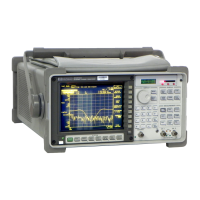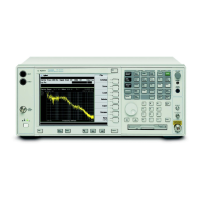Variations from the General Model
To analyze the performance of a control system, you must introduce a stimulus
and monitor the effect. Some control systems have special requirements for
testing and analyzing the results. This may limit how you approach setting up
the measurement.
• Some systems have access to the signals between blocks. Printers and plotters that
move a head around may have one chip that performs as a summing junction,
compensation block, and feedback block; so, access to the signals is limited.
• Sometimes the signals of interest are in a form that is difficult to measure. If the
plant is a motor, the signal that drives it may be pulse-width modulated. In a
switching power supply, the output signal may be a very large voltage. When the error
signal (e) is analog, it may be so small that the signal-to-noise ratio is poor.
• Some systems require a stimulus signal r 0. Testing disk drives requires that the
disk be operating at all times; in this case r cannot equal 0. The test stimulus must be
injected in the forward gain path, usually between the output of the compensator and
the input to the power amplifier. This injection point may need to be added to the
circuit via two cascading-inverting op amps. This affects the math and your approach.
However, if r(t) is uncorrelated to the stimulus signal, it can be treated as noise and
averaging can be used to remove its effects.
Designing the System
Control system design requires measuring the performance parameters of the
system, measuring the stability of the system, and modeling the control loops.
Typically, you start by drawing a block diagram that represents your system,
including signal paths, types, and levels. Next, you work out the math that
shows how to derive the open loop response from the measurement. After
making a closed loop measurement, you can use the Agilent 35670A’s math
operations to transform the measurement into the open loop response.
Analyzing Test Results
Once you have measured the performance and stability of a system, you should
verify that your control system model is correct. You can do this by using the
Agilent 35670A’s optional curve fitter to derive the poles and zeros of the
response and update your model.
Agilent 35670A
Measuring Control Systems Operator's Guide
5-4

